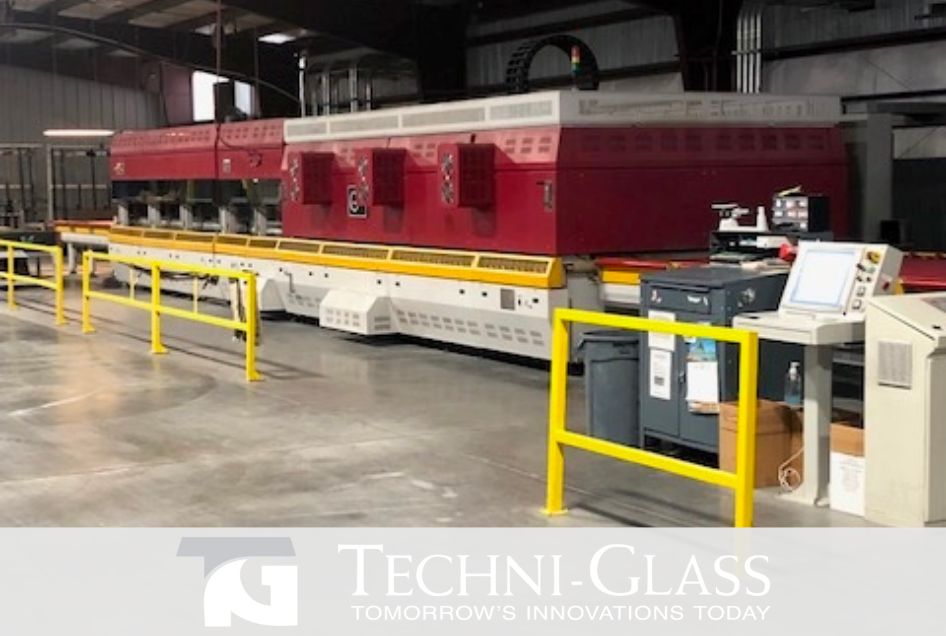Glass is a ubiquitous material in our modern world, with applications ranging from windows and mirrors to smartphones and kitchenware. While glass is known for its transparency and aesthetic appeal, its inherent fragility has led to the development of various techniques to strengthen it. One such technique is glass furnace tempering, a process that enhances the durability and safety of glass products.
The Basics
Glass furnace tempering, also known as tempered glass or toughened glass, is a thermal process that involves heating glass to a high temperature and then rapidly cooling it. This controlled heating and cooling sequence results in the formation of compressive stress on the surface of the glass while creating a tensile stress in the interior. This internal tension-compression balance imparts several key properties to tempered glass that distinguish it from untreated glass.
The Process
- Preparation: The first step in glass furnace tempering is the selection of suitable glass. Typically, it involves using a high-quality, low-iron glass that is free of impurities. The glass is cut and shaped to the desired dimensions. The furnace at Techni-Glass accepts glass up to 82” x 156” in size and 3.2 mm – 19 mm in thickness.
- Heating: The glass is placed into a tempering furnace, where it is heated to a temperature of around 620 to 680 degrees Celsius (1150 to 1250 degrees Fahrenheit). This temperature is just below the glass’s softening point.
- Quenching: After reaching the desired temperature, the glass is rapidly cooled using high-pressure air jets. This quick cooling process induces surface compression while allowing the interior to remain in a state of tension.
- Final Inspection: The tempered glass is thoroughly inspected for any defects, ensuring its quality and safety.
The Benefits
The tempering process imparts several advantageous properties to glass:
- Enhanced Strength: Tempered glass is significantly stronger than untreated glass. Its surface compression gives it resistance to impact, making it less prone to breaking or shattering upon forceful contact.
- Safety: When tempered glass does break, it shatters into small, granular pieces rather than sharp shards. This reduces the risk of injury, making it ideal for applications where safety is paramount, such as in automobile windshields and shower enclosures.
- Thermal Resistance: Tempered glass has improved resistance to thermal stress, making it suitable for use in environments with fluctuating temperatures, like ovens and stovetops.
- Scratch Resistance: The surface compression also increases its resistance to scratches and abrasions, prolonging its lifespan.
Read More:
The Applications
Glass furnace tempering has a wide range of applications across various industries:
- Automotive: Tempered glass is commonly used in automobile windows, windshields, and sunroofs due to its safety and durability.
- Construction: In the construction industry, tempered glass is used for windows, doors, and glass facades, where safety and strength are essential.
- Furniture: It is used in glass tabletops, shelves, and cabinets, adding both elegance and safety to furniture designs.
- Consumer Electronics: Many smartphones, tablets, and touchscreens incorporate tempered glass to protect their displays from damage.
- Kitchen Appliances: Tempered glass is used in ovens, stovetops, and microwave doors because of its resistance to thermal stress.
Read More:
Glass furnace tempering is a remarkable process that transforms ordinary glass into a super-strong, safe, and versatile material. Its widespread use in automotive, construction, electronics, and other industries is a testament to its effectiveness and reliability. Whether you’re driving a car with a tempered glass windshield or using a tempered glass smartphone screen, this innovative glass treatment has become an integral part of our daily lives, ensuring our safety and enhancing our overall experience with glass products.
Ready to make something great or want to learn more? Fill out the form below to get started.

